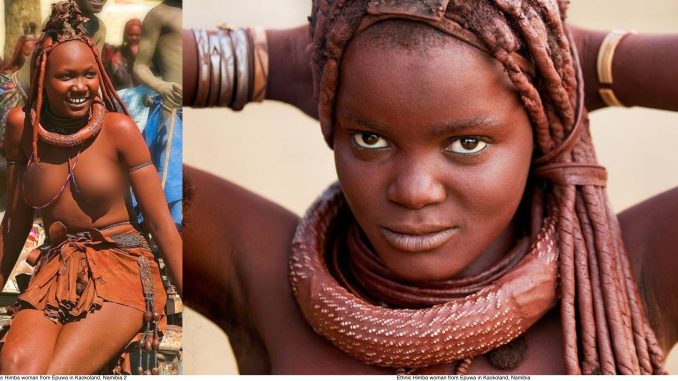
HIMBA PEOPLE: AFRICA`S MOST FASHIONABLE TRIBE
The Himba ethnic group have kept their ethnic individuality and culture in the seclusion of Kaokoland. This ancient tribe of semi-nomadic pastoralists live in the Kunene region of northern Namibia. There are between 20,000 and 50,000 Himba people.
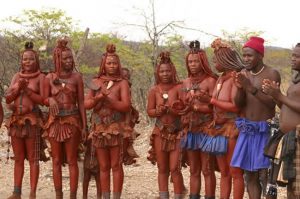
her body smeared with red ochre for beautification and protection from sun`s ultra violet rays and her braided hair shows that she is now an adult and can marry.The Himba ethnic group have kept their ethnic individuality and culture in the seclusion of Kaokoland. This ancient tribe of semi-nomadic pastoralists live in the Kunene region of northern Namibia. There are between 20,000 and 50,000 Himba people. The friendly and extraordinary Himba people are closely related to the Herero people but they have resisted change and preserved their unique cultural heritage. About 240,000 Herero people live in Namibia, Botswana and Angola. They belong to the Bantu group of African nations.
The Himba and Herero speak the same language. The Himba are a pastoral people. They predominantly breed cattle and goats and lead a nomadic life.Depending on the time of year, they move with their herds to different watering places. Milking of animals as well as other jobs like bringing water to the village and building homes is done by women.
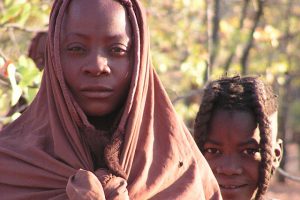
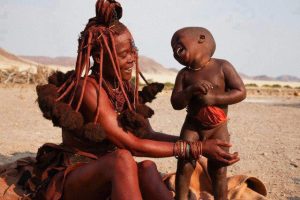
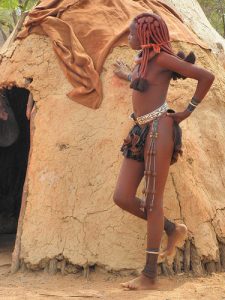
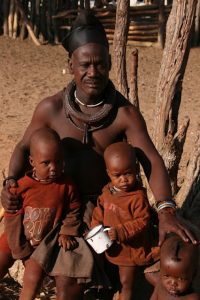
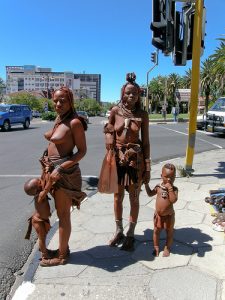
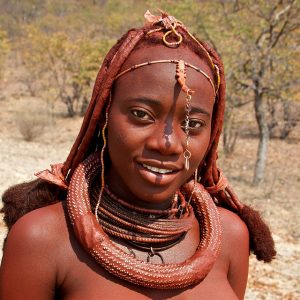
Every member of certain tribal community belongs to two clans – a “patriclan” (through the father) and “matriclan” (through the mother). It means that the Himba people have a bilateral system of descent. On top of each clan there is the eldest man of the clan. Sons live with their father’s clan. When girls get married they move to the clan of their husband.
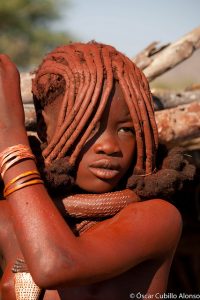
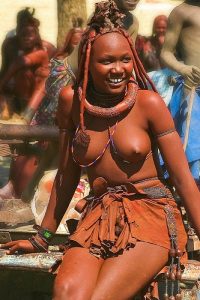
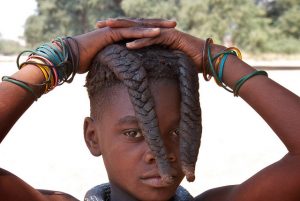
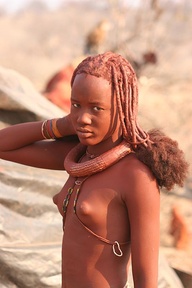
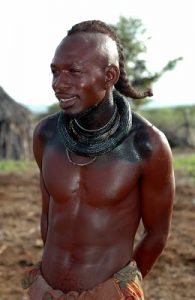
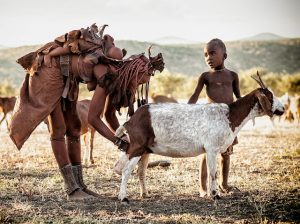
Clothes, hairstyle and jewellery are all of particular significance to the Himba and are part of their tradition and culture. Even newborn babies are adorned with pearl necklaces. When the children are a little older, bangles made of beaten copper and shells are added. The proud Himba women take several hours for beauty care every morning. The entire body is rubbed with a cream, which consists of rancid butterfat and ochre powder. “It has to be said that Himba women do not wear lot of clothes. To somehow protect themselves from the sun they make a paste of butter fat, ochre, and herbs which they later put on their skin. That is why their skin is of reddish colour. The Himba believe that this colour is beautiful. It also has symbolic meaning as it unites the red colour of earth and blood which is the symbol of life. The hairstyle worn by Himba women is also quite unique. The hair is braided (“weaved”) and covered with the special ochre mixuture called “otjize”. Before reaching the puberty girls have only two hair braids. After the puberty they are allowed to make more of them. Single Himba men have only one braid backwards from the crown of the head. When they get married keep their hair tied in the shape of a turban.”
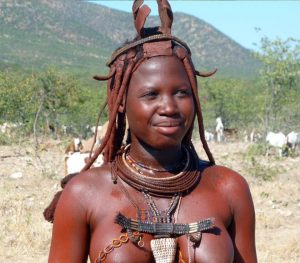
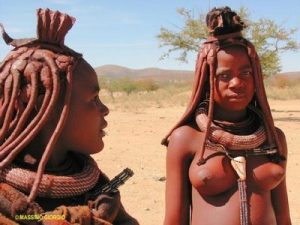
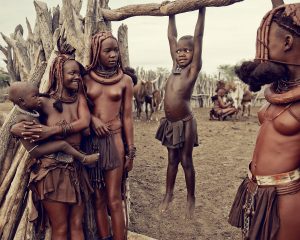
One of most interesting rituals of these people is that of the ritual fire, the ”okoruwo”. The fire provides contact between the living and the dead, which is necessary for harmonious living and keeping the ancestors happy. It is kept alive until the death of the headman. When this happens, his hut and the fire is destroyed. His family dance in mourning throughout the night. Before his burial everyone says to him: “Karepo nawa” (”keep well”). Later a fresh mopane tree is lit from the embers of the old fire. Women raise children too. There is a situation that one woman in the community gets a task of raising children. So, she raises children of her own and those of other women in the community. Men on the other side are more involved in political and legal matters.
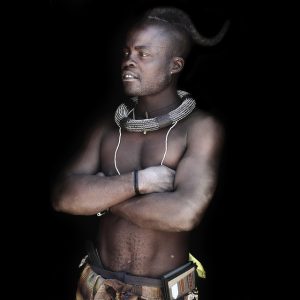
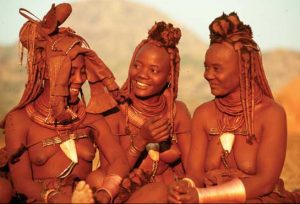
The Himbas were impoverished by Nama cattle raiders in the middle of 1800’s and then forced to be hunter-gatherers. Because of these events they were called the Tjimba, derived form the word meaning aardvark, the animal that digs for its food. Many Himbas fled to Angola where they were called Ovahimba, meaning ‘beggars’. They left with their leader called Vita (”war”). After World War 1 he resettled his people in Kaokoland. Since these events the Himbas were living their nomadic pastoralist lives. But now more and more they have to reconcile traditional ways with European values.
BY: Kweku Darko Ankrah

Qué bellas son las mujeres de este país que me encantaría mucho conocer….Yo soy peruano y vivo en Perú, Sudamérica….Saludos….